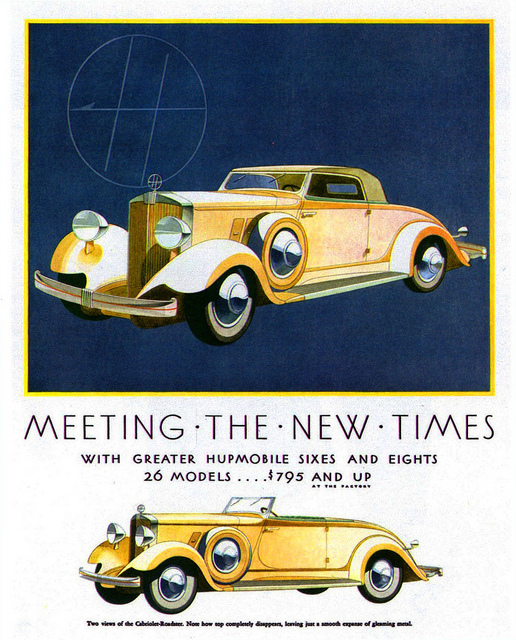Raymond Loewy's First Hupmobile Design
The present post features his 1932 design that was used on Hupp's more expensive line of cars. According to the Wikipedia entry, by the late 1920s the company added models intended for what amounted to the upper-middle market segment and promoted them accordingly. This was at the price of moving away from the clientele base that built the brand. That resulted in diminished sales, a condition exaggerated by the Great Depression of the 1930s.
For the 1932 model year Hupp marketed both the Loewy design and, for its lower price range, continuation of its previous design. Examples of both are shown below. Aside from photos taken when the cars were new, images are sourced for cars up for sale or auction.
1932 Hupmobile 216 Coupe
This lower-priced Hupp used the pre-1932 body design. Note the conventional (for the time) front fender style.
1932 Hupmobile B 216 4-door sedan
The hood and grille on this sedan are narrower than on the new upscale Hupps, and grille design details differ slightly from the new design seen below.
1932 Hupmobile 226 4-door sedan
The Loewy design is fairly typical of its time. That is, the basic body shape is similar to late-1920s configuration, but slightly more rounded at the aft of the passenger compartment and here and there elsewhere. In 1950/51 Loewy stated that his contribution was the automobile's front end; presumably Hupp or supplier body engineers were responsible for the design abaft of the cowl.
The same car, side view. For some reason Loewy chose "cycle" type front fenders rather than the "ogee" curve fender format found on most contemporary American cars including the Hupps shown in the first two images above. Perhaps he thought cycle fenders connoted a sporty, racy appearance.
The same car in rear quarter view. The cycle front fenders allowed spare tired to be fully exposed, rather than being partly nested in the fenders.
1932 Hupmobile Series-I 226 Rumbleseat Coupe
Side view of a sporty upscale '32 Hupp.
1932 Hupmobile Coupe posed in front of a dealer's showroom.
Loewy's grille design eliminated the wide, central vertical bar while adding a new hood ornament and some vertical ribbing at the top center of the frame.
1932 Hupmobile advertisement
An example of how 1932 Loewy-design Hupmobiles were presented to potential buyers. The car in the main illustration is highly distorted, though the lower drawing is closer to being correct.










Comments
Post a Comment